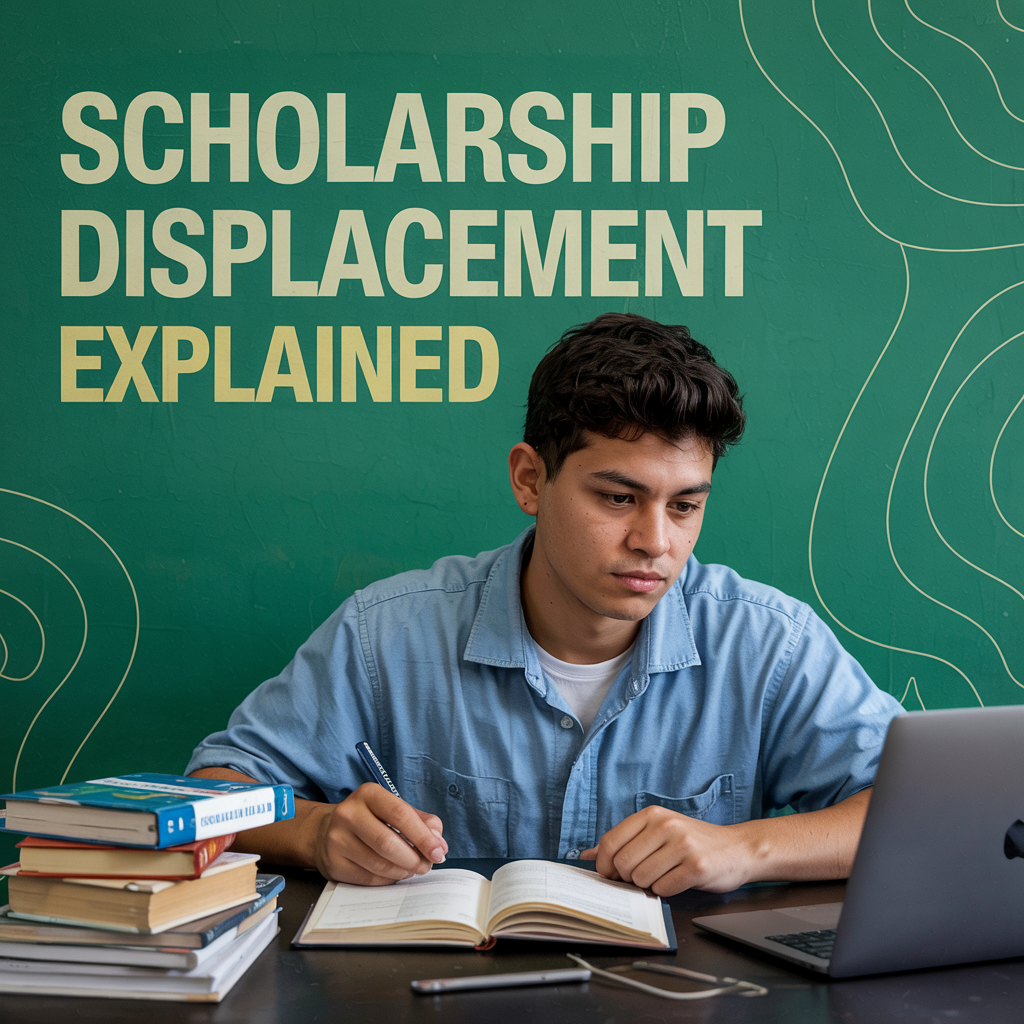Scholarship Displacement: Will Winning Outside Scholarships Reduce My College Aid?

Winning scholarships from sources outside your college (like local clubs, national organizations, or companies) is fantastic! It feels like you’re stacking up free money. But sometimes, students are surprised and frustrated to find that winning an outside scholarship causes the college to reduce the financial aid they offered. This practice is known as scholarship displacement. Understanding how it works and checking each outside scholarship policy is crucial.
The Excitement (and Potential Frustration) of Outside Scholarships
You worked hard applying for private scholarships, and you won! Your first thought is likely, “Great, this will reduce my loans or family contribution!” Often, it does. But sometimes, the college adjusts your existing financial aid package because of the new funds, potentially reducing the net benefit of your outside award. This doesn’t happen everywhere, but it’s common enough to be aware of.
🎓 Looking for more scholarships? Start building your standout profile on Cirkled In — where opportunities find you.
What is Scholarship Displacement?
Scholarship displacement (also called “overaward adjustment”) is when a college reduces a student’s previously awarded financial aid package because the student received additional aid from external sources (outside scholarships). The total amount of financial aid a student receives generally cannot exceed the college’s official Cost of Attendance (COA) or, in some cases, the student’s calculated financial need. When outside scholarships push the total aid package over these limits, the college may reduce its own aid components.
Why Do Colleges Reduce Aid? (Their Perspective)
Colleges often adjust aid packages due to:
- Federal Regulations: Federal rules limit total aid to the Cost of Attendance.
- Institutional Policies: Many colleges have policies aiming to distribute their limited institutional grant funds to as many needy students as possible. If an outside scholarship meets need that the college was previously covering with its own grants, they might redirect those grant funds to another student.
- Need Calculation: The primary goal of financial aid is often to meet a student’s demonstrated financial need. If an outside scholarship helps meet that need, the college might feel its obligation has been partially fulfilled by that external source.
Their goal isn’t usually to penalize students, but to manage resources and comply with regulations.
How Displacement Typically Works (Order of Reduction)
Colleges usually have a specific order in which they reduce aid components if an outside scholarship creates an overaward:
- Loans: Often, the first thing reduced are student loans (starting with unsubsidized, then subsidized). This is usually the best outcome for the student.
- Work-Study: The work-study portion of the package might be reduced next.
- Institutional Grants/Scholarships: This is the most frustrating scenario. Some colleges will reduce their own grant or scholarship aid last. If this happens, the outside scholarship effectively replaces college grant money, providing less net benefit to the student than hoped.
This is why stacking scholarships doesn’t always mean stacking dollar-for-dollar savings on your bill.
Finding a College’s Outside Scholarship Policy
This is critical! Before you even apply for outside scholarships (or as soon as you’re accepted), find the college’s specific policy:
- Check the Financial Aid Website: Look for sections on “Outside Scholarships,” “External Awards,” or “Overawards.”
- Call or Email the Financial Aid Office: Directly ask about their scholarship displacement policy and the order in which aid is typically reduced. Ask: “If I receive an outside scholarship, how does it affect my existing financial aid package?”
Policies vary significantly between colleges. Some are very generous and reduce loans first; others may reduce institutional grants first.
Strategies to Potentially Minimize Displacement
- Ask the Scholarship Provider: Some scholarship providers have rules stating their funds cannot be displaced or must be used to reduce loans first. Inform the college’s financial aid office if your scholarship has such restrictions (provide documentation).
- Inquire About Cost of Attendance Increases: Sometimes, outside scholarships can be used to cover expenses not fully included in the standard COA, like a better computer, specific travel, or study abroad costs. Ask the financial aid office if the scholarship can be applied this way before reducing other aid.
- Request Loan Reduction: If the college’s policy isn’t ideal, politely request that the outside scholarship funds be used first to reduce the loan portion of your aid package.
Final Thought: Know the Policy, Ask Questions
Scholarship displacement can be a confusing and disappointing aspect of financial aid. The best approach is to be proactive. Research the outside scholarship policy for every college you are seriously considering before problems arise. Understand how they handle stacking scholarships and don’t hesitate to politely ask the financial aid office questions. Knowing the rules helps you manage expectations and potentially advocate for the best outcome.
Need more tips on college applications, scholarships, or just how to survive this whole process? Cirkled In has your back—check out Cirkled In resources to help you through every step of your college journey!
Check out Cirkled In and start owning your future today!



0 Comments